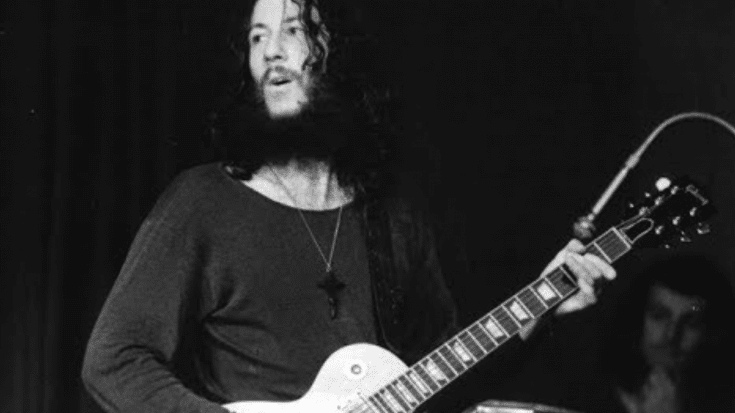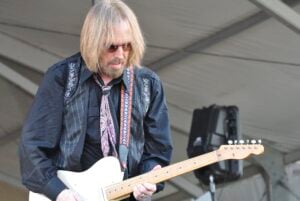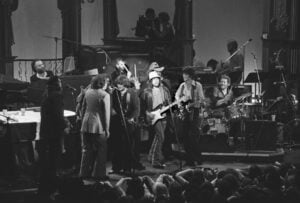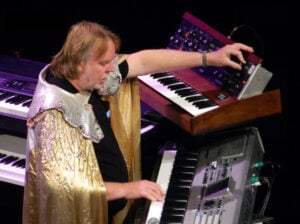3 Overlooked Classic Rock Guitar Riffs That Remain Timeless and Still Pack a Punch Today

via The Guitar Show / YouTube
Rock fans know the power of a great riff—it grabs your attention and never lets go. While songs like “Smoke on the Water,” “Iron Man,” or “Back in Black” are often the first tracks every beginner guitarist learns, there are plenty of other heavy-hitting riffs that have stood the test of time. These lesser-known tracks may not top streaming charts or appear on every “Best Of” playlist, but they showcase creativity, technique, and energy that continue to inspire musicians decades later.
“Rock ’N’ Roll Rebel” by Ozzy Osbourne (1983)
Released on Ozzy Osbourne’s 1983 album Bark at the Moon, “Rock ’N’ Roll Rebel” features guitarist Jake E. Lee, who often doesn’t get the credit he deserves. Lee took over after the death of Randy Rhoads and before Zakk Wylde joined the band. Sandwiched between two legendary guitarists, Lee still managed to make his mark. “Rock ’N’ Roll Rebel” begins with a sharp, fast-paced riff filled with alternate picking and tricky timing, making it one of the harder Ozzy songs to play accurately. The riff mixes speed with groove in a way that’s hard to imitate.
Even though “Crazy Train” and “Bark at the Moon” usually get the spotlight, this track is a true gem for those willing to dig deeper. Lee’s tone is clean but aggressive, and his rhythm playing is tight and complex. Ozzy’s vocals fit perfectly with the riff, creating a strong back-and-forth between voice and guitar. This song is also a reminder of the long line of guitar talent that has worked with Ozzy—from Tony Iommi in Black Sabbath to Lee and beyond. It’s a riff that deserves more attention from fans and players alike.
“Spanish Castle Magic” by Jimi Hendrix (1967)
“Spanish Castle Magic” was released on Axis: Bold as Love in 1967 and remains one of Jimi Hendrix’s most underrated guitar tracks. The song opens with a gritty, raw-sounding riff that immediately sets the tone. It’s fast, rhythmic, and unpredictable—perfectly reflecting Hendrix’s experimental style. The riff is based on a repetitive two-chord pattern, but Hendrix spices it up with quick slides, subtle bends, and chord variations. The track was inspired by a real venue called The Spanish Castle, a club south of Seattle where Hendrix used to see bands play during his youth.
Although it’s not as instantly recognizable as “Purple Haze” or “Hey Joe,” the riff in “Spanish Castle Magic” influenced future generations of rock and blues guitarists. Stevie Ray Vaughan, in particular, was known to cite Hendrix’s playing on this track as a major inspiration. Hendrix’s use of fuzz and tone control in this song also helped shape the psychedelic rock sound. He once explained his writing process as “a little bit of daydreaming, here and there,” which perfectly sums up the unpredictable but brilliant nature of this riff.
“The Green Manalishi (With the Two Prong Crown)” by Fleetwood Mac (1970)
Before Fleetwood Mac became a household name with Stevie Nicks and Lindsey Buckingham, they were a British blues band led by guitarist and singer Peter Green. “The Green Manalishi (With the Two Prong Crown)” was released as a single in 1970 and remains one of Green’s most intense and haunting tracks. The riff is slow, heavy, and almost hypnotic. Built around a minor-key blues progression, it creates a dark, mysterious atmosphere that reflects Green’s mental state at the time. The track was later famously covered by Judas Priest, but Green’s original version still hits hard.
This song also shows Green’s skill in creating mood through tone and feel. The layered guitars, combined with his eerie falsetto vocals near the end, make it one of the most unique riffs of its time. Many fans have speculated on what the “Green Manalishi” represents—some believe it refers to money, others to inner demons. Regardless of its meaning, the power of the riff has made it a lasting part of classic rock history and a favorite among guitarists who appreciate subtle complexity.
View this post on Instagram















